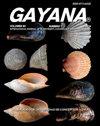智利中北部沿海湿地中红吊袜带白骨顶对水生植物的消耗
IF 0.2
4区 生物学
Q4 ZOOLOGY
引用次数: 1
摘要
红袜白骨顶是新热带地区南部沿海湿地常见的食草水鸟。Punta Teatinos(智利中北部)沿海湿地粪便的显微组织学分析~29oS),表明该白骨顶主要以该地区最丰富的沉水植物pectinata Stuckenia为食。从蜜环菌作为滨海湿地主要食用菌的生态作用出发,讨论了蜜环菌的觅食行为。本文章由计算机程序翻译,如有差异,请以英文原文为准。
Consumption of aquatic macrophytes by the Red-gartered Coot Fulica armillata (Aves: Rallidae) in a coastal wetland of north central Chile
The Red-gartered Coot Fulica armillata, is a common herbivorous water bird in coastal wetlands of the southern Neotropical region. Microhistological analyses of feces collected at the coastal wetland of Punta Teatinos (north central Chile; ~29oS), show that this coot feeds predominantly on Stuckenia pectinata, the most abundant submerged macrophyte at this area. The foraging behavior of F. armillata is discussed in regard with its ecological role as a primary consumer on coastal wetlands.
求助全文
通过发布文献求助,成功后即可免费获取论文全文。
去求助
来源期刊

GAYANA
Agricultural and Biological Sciences-Aquatic Science
CiteScore
0.60
自引率
0.00%
发文量
5
期刊介绍:
GAYANA is a scientific journal published by Universidad de Concepción, Chile. It is the modern version of Gayana Oceanología and Gayana Zoología. Therefore its numeration starts at volume 63(1).
GAYANA covers all aspects of zoology and oceanographic research. It is structured in five sections, defined by subject or discipline: Ecology, Biodiversity and Taxonomy, Earth Sciences, Evolutionary, and Applied Biology and Environmental Biology. Each section is in charge of an editor who receives and manages the manuscripts sent for evaluation in close collaboration with the editorial board.
 求助内容:
求助内容: 应助结果提醒方式:
应助结果提醒方式:


